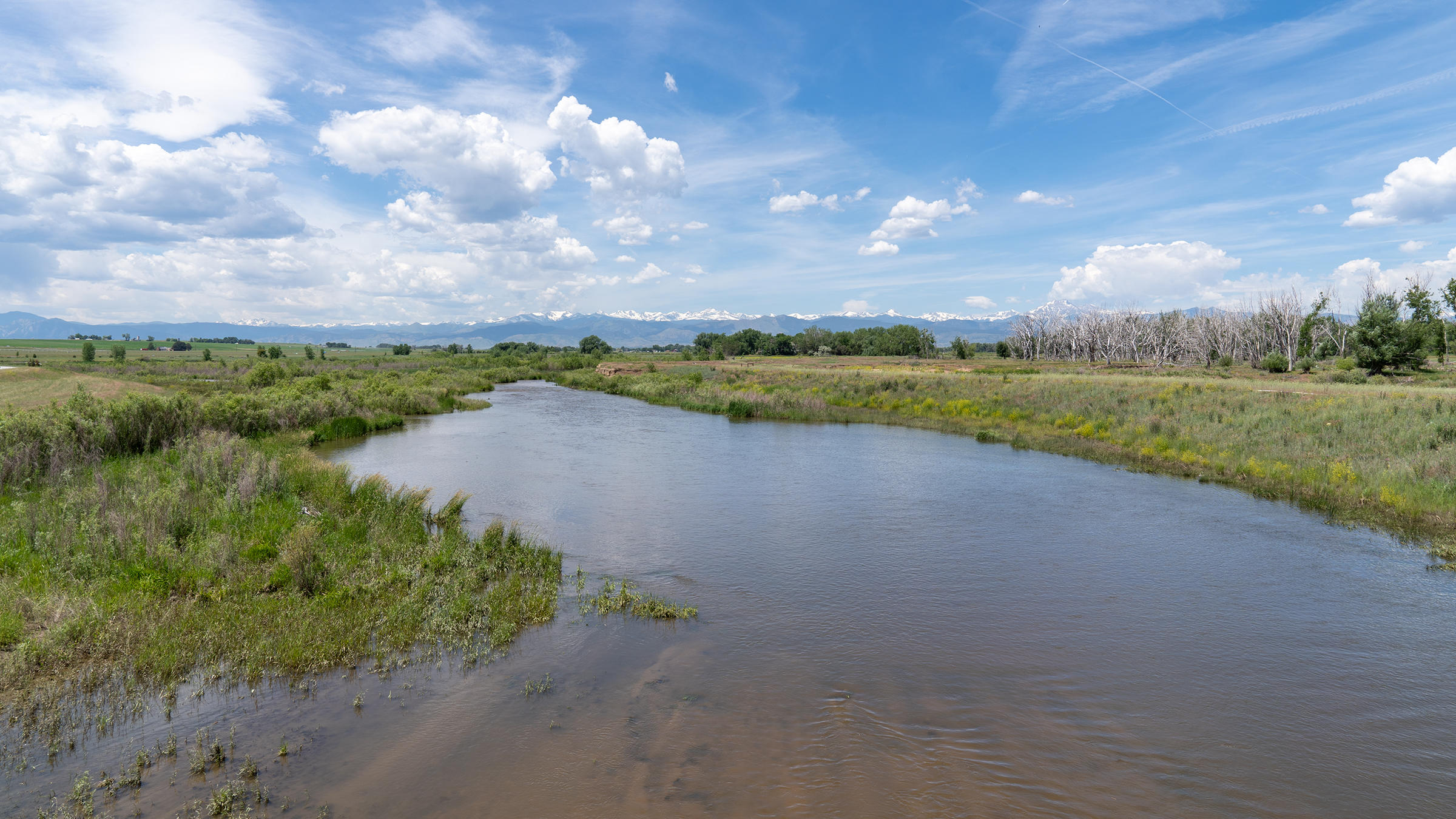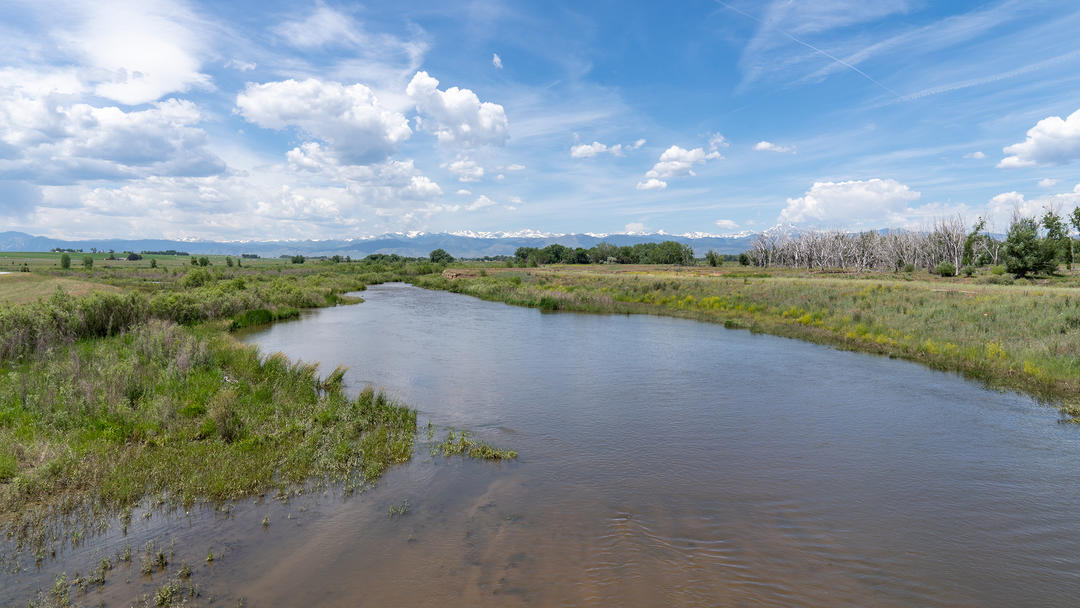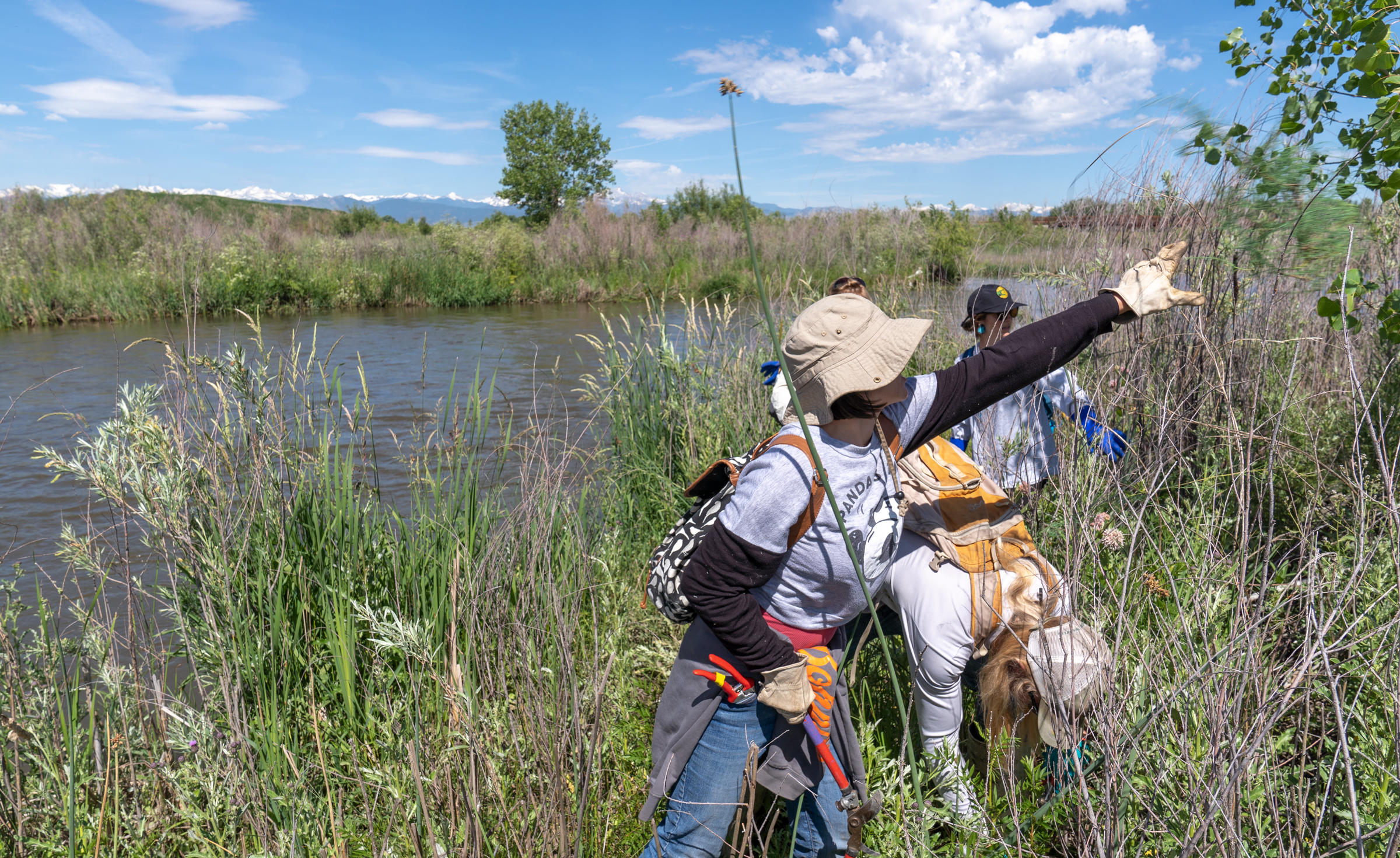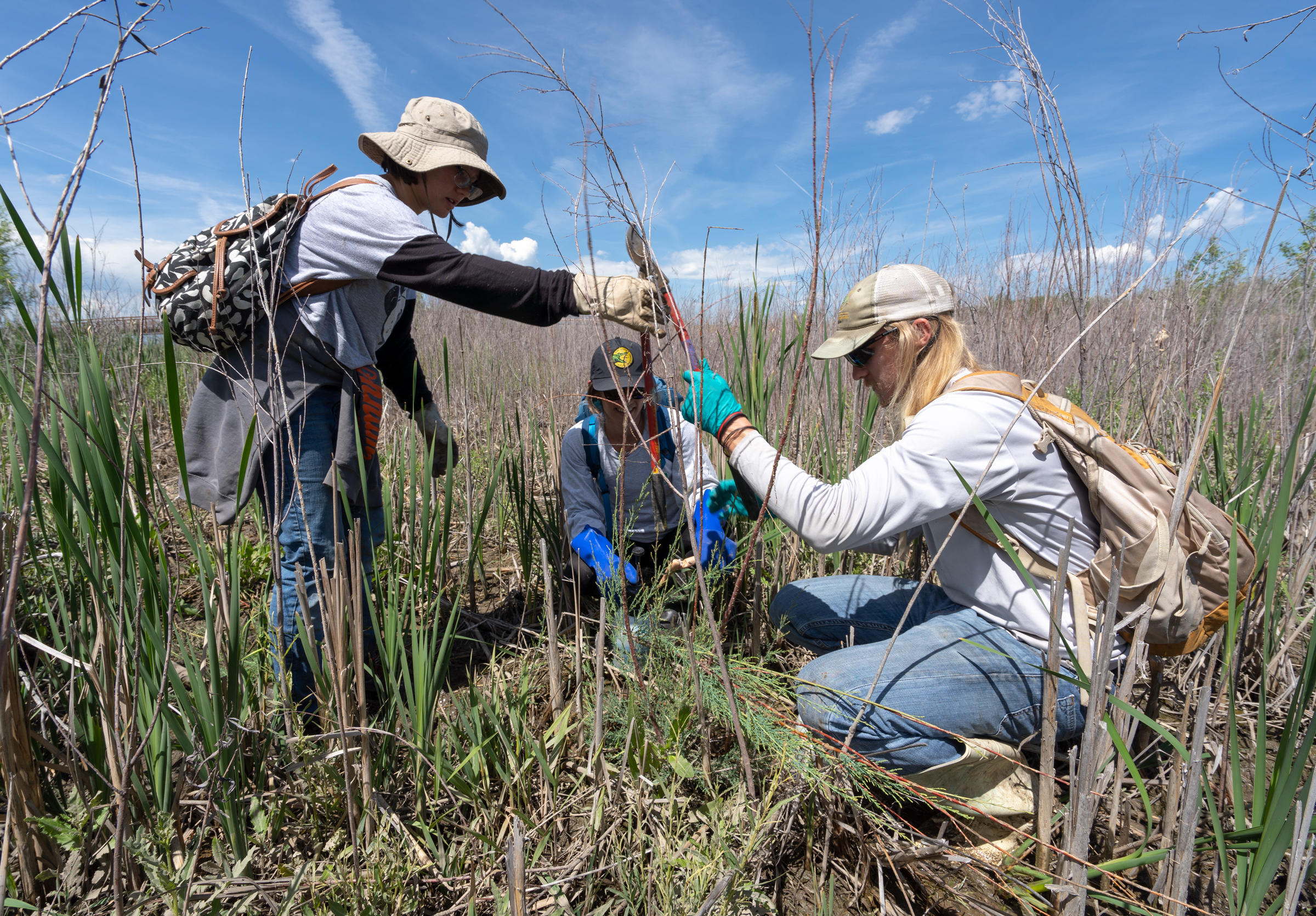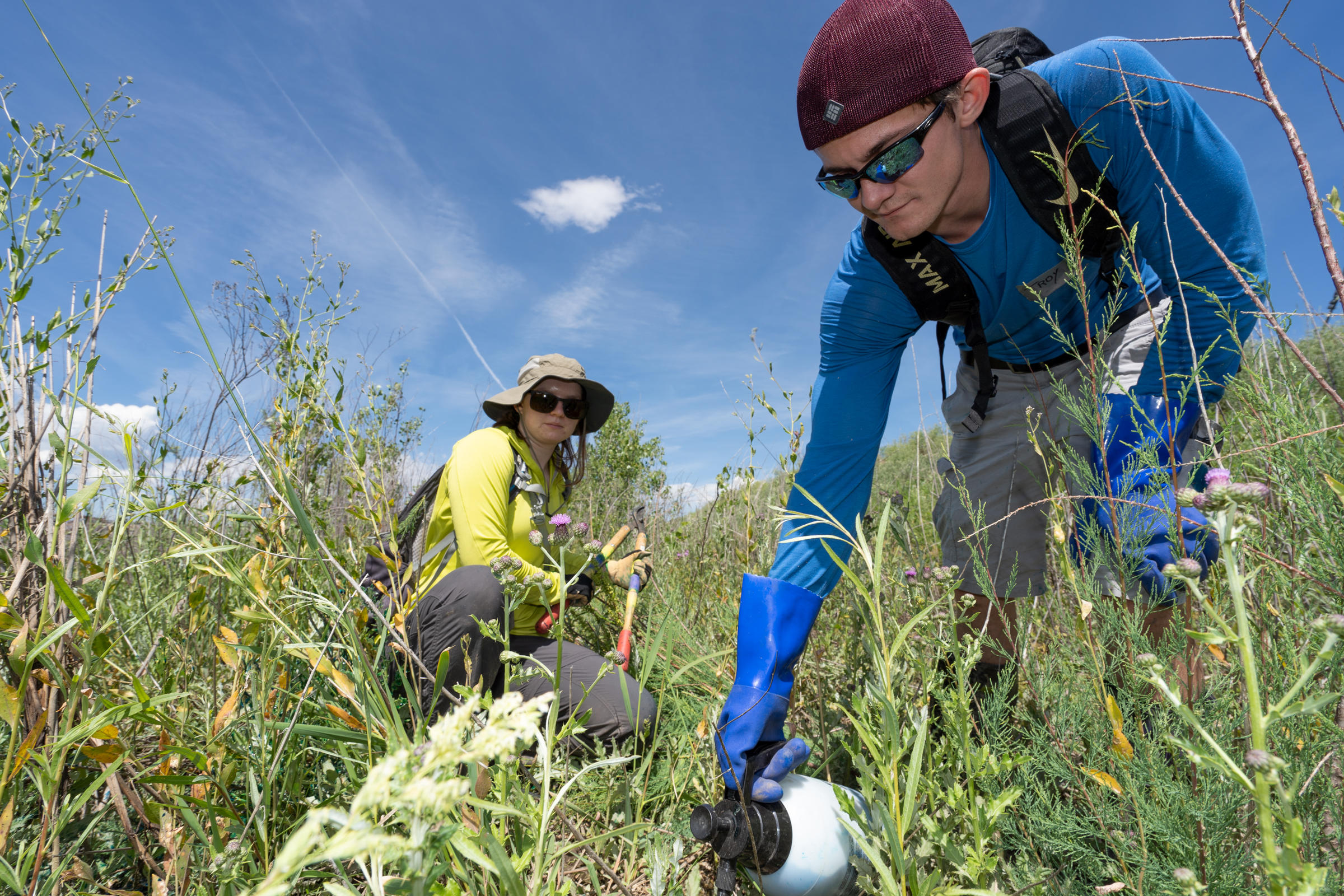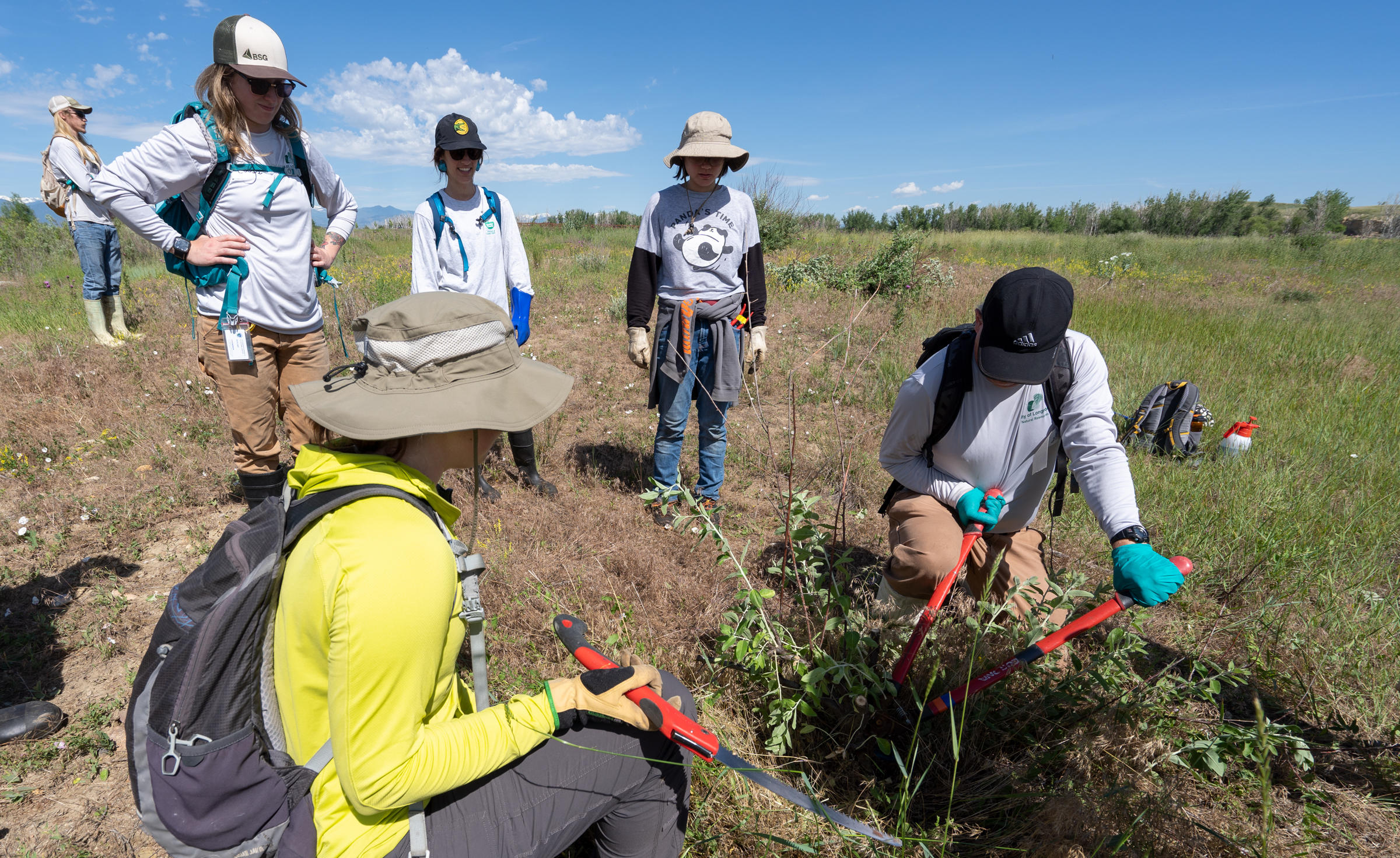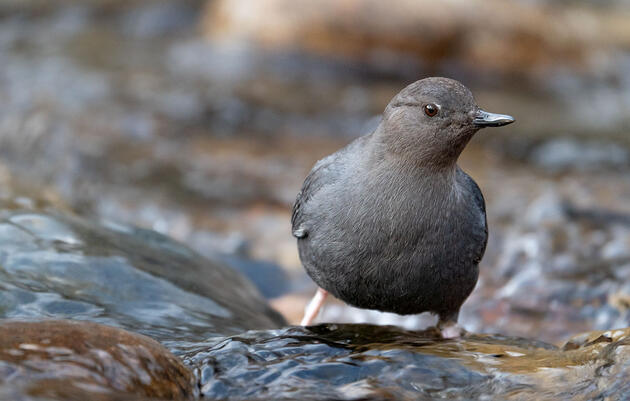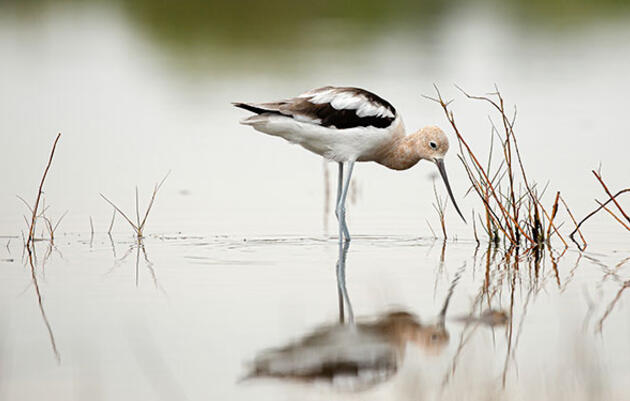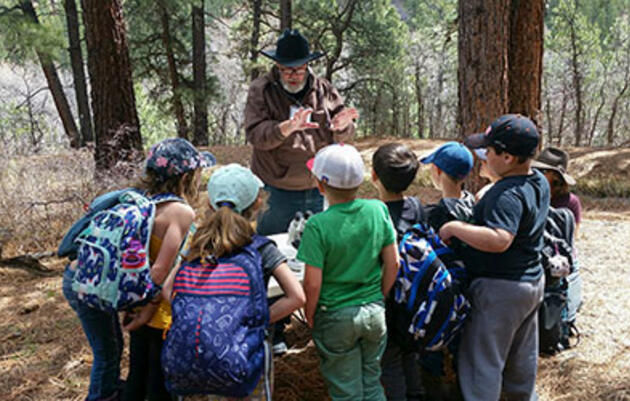The group heads out in a single-file line along the green banks of the St. Vrain Creek outside Longmont, Colorado. We trudge through mud on rolling terrain with gloved hands holding loppers, pruners, and handsaws, searching for the thin green branches of invasive tamarisk. One young woman came from Denver and says she just wants to make a difference. Another person got involved through a friend and loves getting exercise and being outdoors. The volunteers come from very different backgrounds, but just as the St. Vrain Creek watershed connects many different areas, so too does it connect many different people today.
The group is here to support a restoration project co-organized by Wildlands Restoration Volunteers (WRV), the City of Longmont, and Audubon Rockies. In 2013, a massive flood carried tamarisk (also known as salt cedar) into the area, resulting in an explosion of this invasive species. Tamarisk is problematic for several reasons. This dense shrub from Africa and Eurasia draws up moisture and dispenses salt, which kills the native plants surrounding it. The net effect is a loss of plant diversity, which in turn is bad for birds, rivers, and people.
Standing on a berm above the creek, Connor Holladay—a natural resource technician from the City of Longmont—explains the project’s purpose. After receiving detailed instructions, volunteers cut the tamarisk so that only the stumps remain. They then carefully apply a small amount of herbicide directly to the stump to stop the plant from regenerating. It is tedious work in the hot sun, but no one is complaining. “This affects people downstream, which is why we do work upstream,” says Holladay.
Much of the work would not be accomplished without volunteers. Two of the volunteers are WRV crew leaders. They guide the other volunteers, tell each other when they spot tamarisk, and assure quality and safety during the work. Lisa Brandt is a cheerful crew leader for WRV. Originally from Wisconsin, she received her degree in ecology and evolutionary biology and her laughter can often be heard as she jokes with other volunteers. She said that it’s great field experience to volunteer with WRV and enjoys the process. “You’re out here doing something that is bigger than yourself, which is really cool.”
In the distance, the snow-capped Rockies rise above the horizon as the clear creek rushes by. It’s a stunning reminder that this water travels from snowpack high up and flows into the creek. This is an ecologically important area, notes Scott Severs, another natural resources technician for the City of Longmont. He says that many different bird species make their home here, and even more will return as restoration continues. American Kestrels, Yellow Warblers, and even a pair of nesting Bald Eagles are just some of the birds he has seen. He also says that the braided streams left over from the 2013 floods provide a home for native fish species to spawn.
As the volunteers work to restore this area, we expect to see a real difference in the health of this site. Geoffrey May, project manager for WRV, envisions an even more biologically-diverse area. Cottonwood galleries will pop up and mature along the banks of the creek, native grasses will sway on the shore, native plants will provide thick cover, the creek will meander more, and birds and mammals will make their way through.
It’s now mid-day and May passes out boxed lunches to volunteers. People gather under the shade of cottonwood trees, laugh, and tell stories. A sense of accomplishment is in the air and people bond over conversation. There’s still more work to be done and more tamarisk to find, so the volunteers head back into the field on this continued adventure.
Audubon Rockies sponsors several volunteer river restoration projects with Wildlands Restoration Volunteers. Visit our events page to find one near you.

